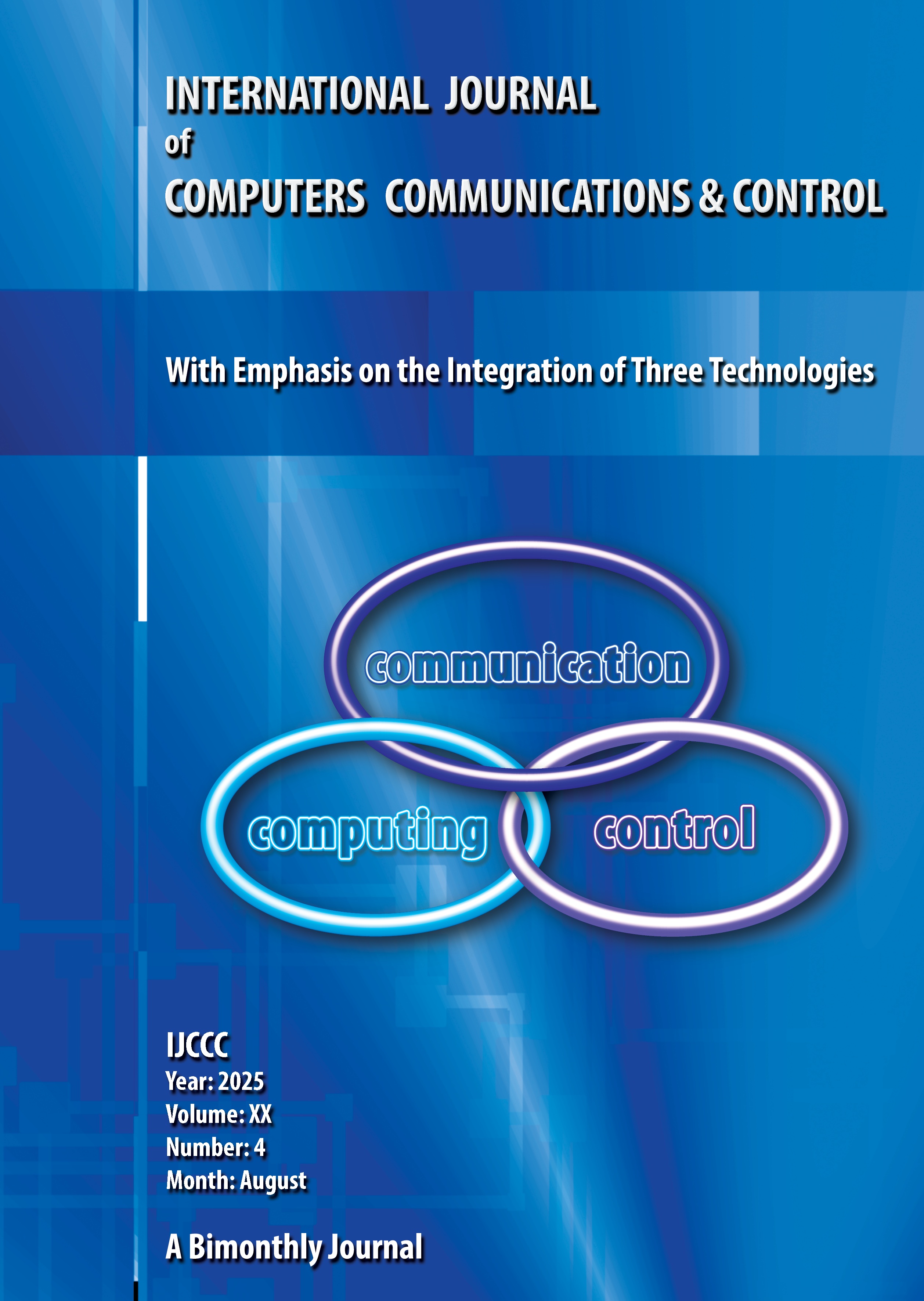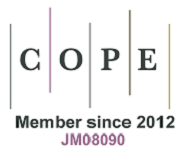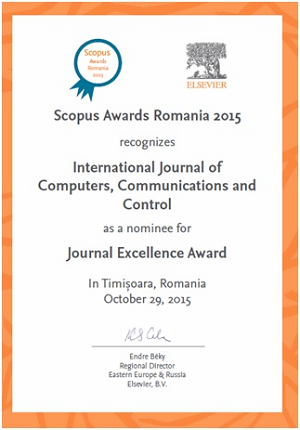Leveraging Fuzzy C-Means and EfficientNetB0 for Improved ECG Image Classification
DOI:
https://doi.org/10.15837/ijccc.2025.4.7050Keywords:
Fuzzy C-Means Clustering, EfficientNetB0, ECG, Deep learning classificationAbstract
Electrocardiogram (ECG) diagnosis techniques provide more precise and more straightforward access to cardiovascular disease (CVD) detection than current clinical procedures allow. The presented framework combines EfficientNetB0 with Fuzzy C-Means (FCM) clustering to establish an innovative deep-learning hybrid model that optimizes ECG image classification. The system initiates its workflow with complete image processing that includes dimension adjustments along with normalization steps and color transformation before using EfficientNetB0 for deep feature acquisition. Using FCM clustering provides this method with a unique capability to generate fuzzy membership values that capture unpredictability and deviation found within ECG data. Two benchmark datasets undergo 5-fold cross-validation testing for evaluation of the model, with the first containing 1,376 ECG images spread across four diagnostic classes and the second having 3,264 images. Experimental tests show that EfficientNetB0-FCM produces better classification accuracy at 99.57% than other current CNN methods depending only on raw image features. Fuzzy membership elements are assessed regarding their ability to improve both precision and generalization using analyses that demonstrate the effectiveness of combined clustering.
References
X. Liu, H. Wang, Z. Li, L. Qin, "Deep learning in ECG diagnosis: A review," Knowl.-Based Syst., 227, 2021, p. 107187. https://doi.org/10.1016/j.knosys.2021.107187
L.A. Abdulla, M.S. Al-Ani, "A review study for electrocardiogram signal classification," UHD J. Sci. Technol., 4(1), 2020, pp. 103-117. https://doi.org/10.21928/uhdjst.v4n1y2020.pp103-117
A. Mincholé, J. Camps, A. Lyon, B. Rodríguez, "Machine learning in the electrocardiogram," J. Electrocardiol., 57, 2019, pp. S61-S64. https://doi.org/10.1016/j.jelectrocard.2019.08.008
A. Boulif, B. Ananou, M. Ouladsine, S. Delliaux, "A literature review: ECG-based models for arrhythmia diagnosis using artificial intelligence techniques," Bioinformatics and Biology Insights, 17, 2023. https://doi.org/10.1177/11779322221149600
H. Narotamo, M. Dias, R. Santos, A.V. Carreiro, H. Gamboa, M. Silveira, "Deep learning for ECG classification: A comparative study of 1D and 2D representations and multimodal fusion approaches," Biomed. Signal Process. Control, 93, 2024, p. 106141. https://doi.org/10.1016/j.bspc.2024.106141
P. Hao, K. You, H. Feng, et al., "Lung adenocarcinoma diagnosis in one stage," Neurocomputing, 392, 2020, pp. 245-252. https://doi.org/10.1016/j.neucom.2018.11.110
O. Deperlioglu, "Segmentation of heart sounds by Re-sampled signal energy method," BRAIN Broad Res. Artif. Intell. Neurosci., 9(2), 2018.
S. Ali, S.M. Adnan, T. Nawaz, M. Obaid Ullah, S. Aziz, "Human heart sounds classification using ensemble methods," ech. J. Univ. Eng. Technol., 22(1), 2017, pp. 113-120.
L. Bahekar, A. Mishal, M. Bisen, D. Koche, S. Alone, "Heart valve diseases detection using ANFIS and wavelet transform," Int. J. Res. Sci. Eng., 3(2), 2017, pp. 279-291.
M.V. Shervegar, G.V. Bhat, "Automatic segmentation of Phonocardiogram using the occurrence of the cardiac events," Informatics Med. Unlocked, 9(1), 2017, pp. 6-10. https://doi.org/10.1016/j.imu.2017.05.002
F. Noman, C.M. Ting, S.H. Salleh, H. Ombao, "Short-segment heart sound classification using an ensemble of deep convolutional neural networks," in Proc. ICASSP 2019 IEEE Int. Conf. Acoust., Speech, Signal Process. (ICASSP), May 2019, Brighton, UK, pp. 1318-1322. https://doi.org/10.1109/ICASSP.2019.8682668
Y. Xia, Z. Gao, H. Zhang, H. Zhang, S. Li, "An automatic cardiac arrhythmia classification system with wearable electrocardiogram," IEEE Access, 6(99), 2018. https://doi.org/10.1109/ACCESS.2018.2807700
J. Huang, B. Chen, B. Yao, W. He, "ECG arrhythmia classification using STFT-based spectrogram and convolutional neural network," IEEE Access, 7, 2019, pp. 92871-92880. https://doi.org/10.1109/ACCESS.2019.2928017
W. Lu, H. Hou, J. Chu, "Feature fusion for imbalanced ECG data analysis," Biomed. Signal Process. Control, 41, 2018, pp. 152-160. https://doi.org/10.1016/j.bspc.2017.11.010
Y. Ji, S. Zhang, W. Xiao, "Electrocardiogram classification based on faster regions with convolutional neural network," Sensors, 19(11), 2019. https://doi.org/10.3390/s19112558
A. Isin, S. Ozdalili, "Cardiac Arrhythmia Detection Using Deep Learning," Procedia Comput. Sci., 120, 2017, pp. 268-275. https://doi.org/10.1016/j.procs.2017.11.238
I. Chamatidis, A. Katsika, G. Spathoulas, "Using Deep Learning Neural Networks for ECG Based Authentication," in Proc. Int. Carnahan Conf. Security Technol., Madrid, Spain, 23-26 October 2017, pp. 1-6. https://doi.org/10.1109/CCST.2017.8167816
M. Naz, J.H. Shah, M.A. Khan, M. Sharif, M. Raza, R. Damaševičius, "From ECG Signals to Images: A Transformation Based Approach for Deep Learning," PeerJ Comput. Sci., 7, 2021, p. e386. https://doi.org/10.7717/peerj-cs.386
M. Tan, Q. Le, "EfficientNet: Rethinking model scaling for convolutional neural networks," in Proc. 36th Int. Conf. Mach. Learn., 2019, pp. 6105-6114.
R. Xu, H. Lin, K. Lu, L. Cao, Y. Liu, "A Forest Fire Detection System Based on Ensemble Learning," Forests, 12(217), 2021. https://doi.org/10.3390/f12020217
A. Howard, M. Sandler, G. Chu, L.-C. Chen, B. Chen, M. Tan, et al., "Searching for MobileNetV3," in Proc. 2019 IEEE/CVF Int. Conf. Comput. Vis. (ICCV), 2019. pp. 1314-1324. https://doi.org/10.1109/ICCV.2019.00140
Mahmood, Mahmood, Alsalem, Khalaf, Elbashir, Murtada, Abd El-Ghany, Sameh, Ahmed, Abd El-Aziz. (2024). Acute Knee Injury Detection with Magnetic Resonance Imaging (MRI). International Journal Of Computers Communications & Control. 19.10.15837/ijccc.2024.5.6648. https://doi.org/10.15837/ijccc.2024.5.6648
Mahmood, Mahmood, Alsalem, Khalaf, Elbashir, Murtada, Abd El-Ghany, Sameh, Ahmed, Abd El-Aziz. (2025). An Intracranial Brain Hemorrhage's Identification and Classification on CT Imaging using Fuzzy Deep Learning. International Journal Of Computers Communications & Control. 20.10.15837/ijccc.2025.2.6795. https://doi.org/10.15837/ijccc.2025.2.6795
J.C. Bezdek, "Pattern Recognition with Fuzzy Objective Function Algorithms", Springer US, 1981. https://doi.org/10.1007/978-1-4757-0450-1
A.H. Khan, M. Hussain, M.K. Malik, "Cardiac Disorder Classification by Electrocardiogram Sensing Using Deep Neural Network," Complexity, 2021, 2021, p. 5512243. https://doi.org/10.1155/2021/5512243
Kaggle. ECG Analysis Dataset. Available online: https://www.kaggle.com/datasets/ evilspirit05/ecg-analysis (accessed on 28-03-2025).
Mahmood A. Mahmood, Khalaf Alsalem. Olive Leaf Disease Detection via Wavelet Transform and Feature Fusion of Pre-Trained Deep Learning Models, Computers, Materials & Continua, 78(3), 2024, pp. 3431-3448 https://doi.org/10.32604/cmc.2024.047604
M.B. Abubaker, B. Babayiğit, "Detection of cardiovascular diseases in ECG images using machine learning and deep learning methods," IEEE Trans. Artif. Intell., 4, 2022, pp. 373-382. https://doi.org/10.1109/TAI.2022.3159505
T. Sadad, M. Safran, I. Khan, S. Alfarhood, R. Khan, I. Ashraf, "Efficient Classification of ECG Images Using a Lightweight CNN with Attention Module and IoT," Sensors (Basel), 23(18), 2023, p. 7697. https://doi.org/10.3390/s23187697
Additional Files
Published
Issue
Section
License
Copyright (c) 2025 mahmood@ mahmood, Khalaf Alsalem, Murtada Elbashir, Sameh Abd El-Ghany, A. Abd El-Aziz

This work is licensed under a Creative Commons Attribution-NonCommercial 4.0 International License.
ONLINE OPEN ACCES: Acces to full text of each article and each issue are allowed for free in respect of Attribution-NonCommercial 4.0 International (CC BY-NC 4.0.
You are free to:
-Share: copy and redistribute the material in any medium or format;
-Adapt: remix, transform, and build upon the material.
The licensor cannot revoke these freedoms as long as you follow the license terms.
DISCLAIMER: The author(s) of each article appearing in International Journal of Computers Communications & Control is/are solely responsible for the content thereof; the publication of an article shall not constitute or be deemed to constitute any representation by the Editors or Agora University Press that the data presented therein are original, correct or sufficient to support the conclusions reached or that the experiment design or methodology is adequate.








